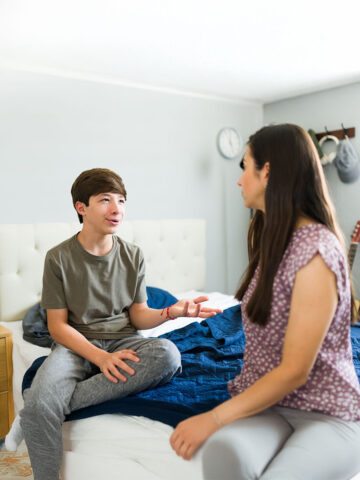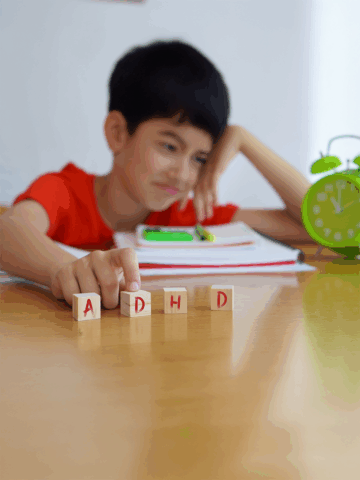By Dr. Tiffany Torigoe-Lai, pediatric psychologist at CHOC
Many parents are feeling the strains of the COVID-19 pandemic, many children may be feeling COVID-19 stress, too. Children can display stress in different ways, such as wanting to be alone, needing more attention, moodiness, inflexibility and increased distractibility. The good news is that there are many things you can do as a parent to help support your child during this time.
Here are some guidelines as to how best to support your child in coping with COVID-19 stress:
Start a conversation with your child
Find what they know. It may not always be apparent, but those little eyes and ears are constantly soaking up bits and pieces of information around them. Saying something as simple as, “What have you heard about the coronavirus?” or “What questions do you have about the coronavirus?” shows children and adolescents that it’s OK to talk about the coronavirus and it’s not so scary that even the grownups don’t want to talk about it.
Share information using developmentally appropriate language. Focus on answering your children’s questions, but do not provide more details than they are asking about. Focus on providing messages to help your children feel safe, such as “We’re doing all we can to stay safe,” but be truthful. This will help maintain that you are a reliable source of information for your child.
It’s OK if you don’t know the answer. Children ask some tough questions! Use those moments as an opportunity to show your child how to find the answer together. Ensure you are getting information from reputable sources, such as the Centers for Disease Control and Prevention or other government or state websites. If you can’t find an answer to their question, it’s OK to let them know that you don’t have the answer but will let them know as soon as you find out.
Let children talk about their fears. It’s natural for children to worry, so let them know that it’s OK to come to you when they have those feelings. This builds trust and a sense of safety. Be careful not to invalidate their worries or fears. Instead of saying, “Don’t worry about it,” acknowledge their feelings by saying something like, “I can tell you’re really worried about what could happen.”
Show them what they can do! Stress and anxiety can stem from feeling helpless and out of control, so reminding children of what they CAN do at this time to stay safe can help ease their worries. Remind them how they can stay safe and healthy through frequent hand-washing and social distancing. Empowering your children to help others in the world, for example, by donating to a food bank or writing letters to healthcare workers or first responders, shows them that they can help, too!
Establish daily routines can help ease COVID-19 stress
Set up a daily schedule similar to their school days. Schedules help ease stress by providing children with a roadmap of what to expect and what is expected of them during their day. This also helps give them a sense of control, particularly during a time of uncertainty. Developing a schedule at home that is similar to one of their school days will help with adjusting to the transition of learning at home as well as returning to school in the future. Learn more about the importance of setting up structure and routine for kids during this time.
Maintain typical sleeping and eating routines. When children and adolescents are at home all day, it can be easy for them to feel like they are on summer vacation. Bedtimes are often shifted to much later in the evenings, which can make it harder for parents to implement typical routines during the daytime. Additionally, an overly tired or hungry child can become more easily overwhelmed, which could lead to emotional meltdowns. Establishing regular snack and mealtimes as well as routine sleep and wake times will help decrease physical and emotional stress on your child.
Get your children’s input. Work with your children to find out what they would like to do in their day and integrate those (realistic) activities into their schedule. This will help with transitions, particularly between preferred and less preferred activities. Here’s a list of activity ideas for kids during this time.
Make time for play! Playtime is crucial to a child’s development, so ensure you also make time to play with your child as part of their daily routine. That special time, even if it’s for 15 minutes, will help to strengthen your bond with your child and will help them feel loved and safe, which ultimately will help them cope with stress.
Find ways for continued active social interactions with family and friends. It’s important for children to stay socially connected to their family and friends while practicing social distancing, as socialization can be a source of support and coping. Ensure that social interactions through online methods, whether via video chat or online gaming, are part of your child’s daily routine. These active interactions tend to work better to reduce stress and worry. Find creative alternative ways to continue to celebrate important traditions, holidays and milestones in their lives. If your child feels disappointed about canceled events, here’s tips for talking about it.
Get physical! Exercise and physical movement are also important parts of a child’s daily routine. Research has shown that engaging in physical activities can help combat the effects of stress. With the limitations of social distancing, you’ll have to find inventive ways to get their bodies moving, such as morning stretches, online exercise videos, dance parties, and/or walks around the block.
Take care of yourself to ease COVID-19 stress
Find your own supports. One of the best ways to help your children cope with stress is to ensure that you as a parent are also mindful of your own mental health needs. Remember, children are always watching and learning from adults, so they are taking their cues from you as to how to respond to this stressful situation. If you are stressed and anxious, they can sense that too. Talk to a trusted friend or family member about how you are feeling or reach out to a mental health provider if needed.
Take a break. With your child home with you all day, you constantly wear multiple hats as a parent, teacher, chef, cleaner, etc. It’s exhausting! It’s OK to take a break and take some space to cool down. Not only does it provide a time and space for you to relax when you are feeling overwhelmed, but it also models good coping for your children when they are over stimulated or stressed.
Limit you and your children’s exposure to the news and social media. While it’s important to stay abreast of the changes happening in response to COVID-19, frequent exposure to news coverage can increase your own anxiety as well asyour children’s anxiety. It’s best to take periodic breaks from the news and social media and to limit your children’s exposure to news media al We know that stress and worry increase the more time people spend with the news and social media during stressful times. Instead, take time to engage in relaxing or fun activities when you’re starting to feel stressed.
Here’s more tips for how parents can deal with COVID-19 stress.
When to seek more help for COVID-19 stress
Drastic changes in a child’s mood, eating, and/or sleeping patterns, increased irritability or tantrums, decreased interest in socializing with friends or family members, decreased enjoyment in preferred activities, and/or increased questioning or seeking of parental reassurance may be signs that more help is needed. If you have concerns about your child’s behaviors, you should contact your primary care physician or a mental health professional for further consultation. Many providers are offering telehealth appointments during this time.
Get more expert health advice delivered to your inbox monthly by subscribing to the KidsHealth newsletter here.
Get mental health resources from CHOC pediatric experts
The mental health team at CHOC curated the following resources on mental health topics common to kids and teens, such as depression, anxiety, suicide prevention and more.





